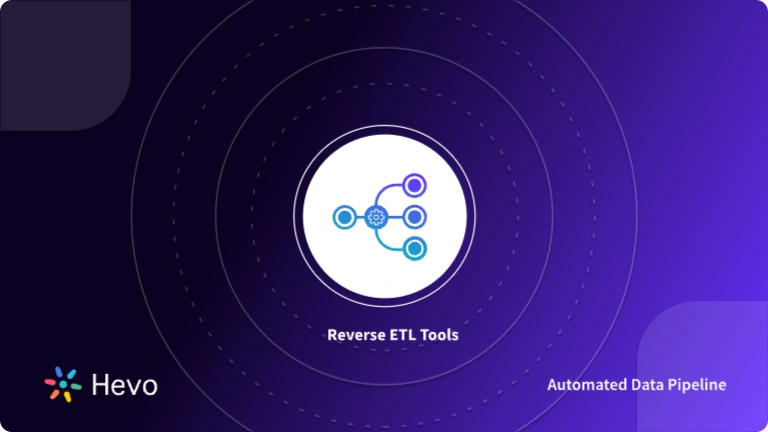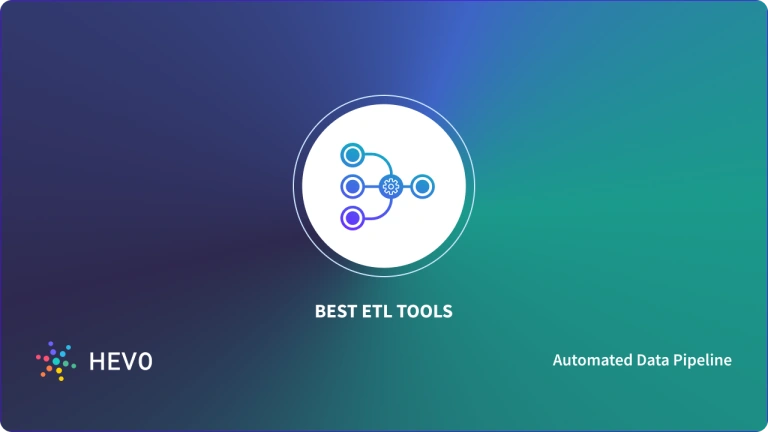How far has your team reached in the journey to extract timely insights from transactional data? Every purchase and financial trade holds the key to unlocking core business drivers, propelling sales, cutting costs, and seizing the elusive competitive advantage. Yet, the road to near real-time analytics has been paved with obstacles—until now.
Just think about how your business could be transformed by achieving this. Real-time financial analysis, healthcare monitoring, supply chain optimization… The possibilities are endless. Here is where zero ETL enters the game. Zero ETL aims to process data where it already sits.
It’s true that Zero ETL has many limitations that automated ETL tools can solve. But it also opens a window of opportunity for the fastest data analytics. In this blog, let’s dig deeper to understand the concept in depth.
Let’s get started!
Table of Contents
What is Zero ETL and How Does it Work?
Zero ETL is a concept ideated to eliminate the latency of data pipelines by providing a secure way for data to move between different systems without any manual intervention. Through ongoing coordination across all connected systems, it makes sure that all data is up-to-date.
Without any intermediate procedures to transform or clean the data, data is transported directly from one system to another in a zero-ETL arrangement. By eliminating the need for ETL, businesses can arrive at accurate insights faster with lower infrastructure costs. We will come to the benefits in detail later. Now, let’s dig deeper into the architecture of zero ETL.
Simplify your ETL/ELT processes with Hevo’s fully automated platform, ensuring data security and accuracy.
- Zero data loss with auto-retry mechanisms
- End-to-end encryption for secure data transfers
- Pre and post-load transformations for flexibility
Migrate your data with confidence—no code required!
Get Started with Hevo for FreeComponents of a Zero ETL Architecture
The architecture of zero ETL changes with the companies offering it. Let’s take a look at a few of these architectures.
You have seen the architecture of zero ETL. Let’s move on to understand how it can benefit your data teams.
Benefits of Zero ETL
- Speed: Zero-ETL integration is quicker than conventional ETL operations because it doesn’t require any data transformation or manipulation. This can be particularly helpful when real-time data delivery is crucial.
- Simplicity: When compared to conventional ETL methods, zero-ETL integration is easier to develop and manage. This is due to the fact that it can be set up quickly and easily and does not involve any complicated data transformation.
- Savings: Zero ETL integration can aid in lowering the overall cost of data integration because it is often quicker and easier to adopt than conventional ETL techniques. Also, When it comes to organizations that have budget constraints, this might be extremely crucial. But, the cost of integrating diverse data sources will be higher for a Zero ETL solution if you have a lot of sources.
You will get a clear picture of where all zero ETL can help you after going through the use cases. Let’s get right into it.
Examples of Zero ETL
Data virtualization: Data virtualization platforms like Denodo, TIBCO Data Virtualization, and Red Hat’s Teiid allow organizations to create a unified view of data from multiple sources without actually moving the data. You don’t need a traditional ETL process here, and it lets you query the data as if it’s located in a single destination.
Real-time data streaming: Technologies that enable real-time data streaming and processing include Apache Kafka and Apache Flink. You can gain insights more quickly by processing data streams in real time without an ETL process.
Schema-on-read: The schema-on-read strategy, in which data is kept in its raw form and only changed when it is read, has become more common. Technologies like Apache Hadoop and Apache Spark are based on this. As a result, businesses may store data more effectively and thus avoid the necessity for ETL.
Data lakehouse: Data lakehouses use query engines that can directly query data in its raw form from the unified storage layer. These query engines, such as Apache Spark, can efficiently process and analyze data without requiring data movement or transformation.
Now, let’s take a look at the companies that offer zero ETL:-
- Google Cloud has introduced a feature called Bigtable federated queries with BigQuery, which allows users to directly query data stored in Bigtable from BigQuery without the need for data replication using ETL pipelines.
- Amazon Aurora offers zero-ETL integration with Amazon Redshift, enabling near real-time analytics and ML on the transactional data from Aurora.
Having said all these, zero ETL has some limitations as well. I will introduce you to those in the next section.
Difference between Zero ETL vs ETL
| Feature | ETL (Extract, Transform, Load) | Zero ETL |
| Data Movement | Requires data to be extracted, transformed, and then loaded into a target system. | Directly accesses data in source systems without the need for extraction and transformation. |
| Transformation | Involves complex transformation processes before loading data into the target. | Minimal to no transformation; data is accessed in its original format. |
| Latency | Typically involves batch processing, leading to potential delays. | Offers real-time or near-real-time access to data, reducing latency significantly. |
| Complexity | Can be complex to manage and maintain due to multiple processes involved. | Simplified architecture, reducing operational complexity. |
| Data Freshness | Data can become stale due to periodic updates. | Provides up-to-date data since it queries live data sources. |
| Cost | May require significant investment in infrastructure and tools for data processing. | Potentially lower costs due to reduced infrastructure needs and operational overhead. |
| Use Cases | Suitable for structured data needing extensive transformation and cleansing. | Ideal for use cases requiring real-time insights and analytics without heavy processing. |
| Technology Stack | Often involves various ETL tools and platforms for processing. | Utilizes data virtualization and real-time analytics tools for direct data access. |
| Scalability | Scaling can be challenging due to the complexity of transformations and data movement. | More easily scalable as it can leverage existing data sources without duplication. |
| User Expertise | Requires skilled personnel to design, manage, and maintain ETL processes. | Generally easier for non-technical users to access and analyze data directly. |
Disadvantages of Zero ETL
Lack of data governance: ETL processes mostly have built-in safeguards and controls to guarantee the accuracy and integrity of the data being moved. For example, Hevo Data has RBAC feature for ensuring this. On the other hand, zero-ETL integration depends on the systems engaged in the transfer to manage these duties. This can make it more challenging to guarantee the accuracy of the transferred data.
Lack of system integration: Since data is frequently stored in many source systems in different forms, it is challenging to develop a standardized Zero ETL solution that can handle all data sources. The cost of integrating numerous diverse data sources into a Zero-ETL solution may be higher than with an ETL technique if you have a lot of them.
On the other hand, ETL solutions can split data, execute transformations in parallel, and employ caching methods. ETL tools like Hevo allow you to easily leverage data warehouse features like massive parallel processing (MPP) for querying large volumes of data fast.
Lack of data quality control: Without ETL procedures, maintaining data integrity and quality might be difficult. In a traditional ETL, data quality checks can be carried out such as checking data types, enforcing referential integrity, and locating missing items.
Data security issues: By exposing sensitive data across several systems or networks, zero-ETL solutions can provide security hazards. By encrypting data in transit and at rest, restricting access to data sources, and providing audit trails, traditional ETL operations can contribute to data security.
Limited capacity for data transformation: Since zero ETL integration entails moving data directly from one system to another without any intermediate processes, it can be challenging to carry out complex data transformations. When data needs to be cleansed, standardized, or altered before being sent, this can be an issue.
Specialized expertise and skills: You need high expertise in data streaming, real-time analytics, and distributed systems to design and manage Zero-ETL solutions.
With that, let’s wrap it up!
Conclusion
Every business is striving to get timely insights from transactional data just like you. Zero ETL (Extract, Transform, Load) has emerged as a new concept that aims to eliminate the traditional ETL process. It enables data to flow seamlessly between systems quickly without complex data transformations or manipulation.
This approach ensures that data remains up-to-date through continuous federation between connected systems, enabling organizations to analyze data in near real-time. The architecture of zero ETL comprises Data ingestion, data storage in data lakes or distributed file systems, and data processing, which is facilitated by distributed processing frameworks or stream processing frameworks. And finally, analytics and querying are enabled through SQL engines or interactive analytics tools.
However, zero ETL has some shortcomings, including data security concerns. It also lacks built-in data governance, faces challenges in integrating diverse data sources, encounters performance and scalability issues, requires attention to data quality control, has limited data transformation capabilities, and necessitates specialized skill sets for implementation and maintenance.
Here is the importance of using an ETL tool like Hevo Data. It has pre-built integrations with 150+ sources. You can connect your SaaS platforms, databases, etc., to any data warehouse you choose, without writing any code or worrying about maintenance. If you are interested, you can try Hevo by signing up for the 14-day free trial.
FAQ on Zero ETL
What does zero-ETL mean?
Zero-ETL refers to data integration strategies that eliminate the need for traditional Extract, Transform, Load (ETL) processes. Instead, it allows direct querying of data from source systems, enabling real-time analytics without the overhead of moving or transforming data.
What is zero-ETL vs ELT?
Zero-ETL is a more streamlined approach compared to ELT (Extract, Load, Transform), where data is extracted and loaded into a target system first and then transformed. In zero-ETL, data remains in its source, and transformations are performed on-the-fly, simplifying workflows and reducing latency.
What are the disadvantages of zero ETL?
Disadvantages of zero-ETL include potential performance issues when querying large datasets directly from source systems, reliance on source system performance and availability, challenges in data governance, and limited ability to perform complex transformations that might be needed for analytics.











